There is no better computing environment than the one availed by a Linux operating system distribution. This operating system environment gives its users a complete computing experience without too much interaction with the GUI (Graphical User Interface). The more experienced you are with Linux the more time you spend on the Linux command-line environment.
The command-line environment is efficient enough to handle OS-centered tasks like file editing, configuration, and scripting. A command-line text editor like the Vim editor makes it possible to perform such tasks.
Popular Vim Features
Vim is a text manipulation program that is enriched with the following features:
- Has a very low memory footprint making it resource-friendly.
- Its command centric making it possible to achieve complex text-related tasks via execution of Vim-related commands.
- Vim is highly configurable due to the simplicity behind the storage of its main configurations.
- Supports numerous plug-ins which make it easy to extend its functionality.
- Supports multiple windows and buffers.
- You can also work on multiple files via multiple tabs.
- Users can repeatedly record and play vim commands via its recording features.
Vim is also an open-source and cross-platform text editor which makes its installation possible on multiple operating system environments. Its vintage nature as a popular and one of the oldest text editors led to the creation of a large and growing Vim community where new users can learn from the expertise of experienced users.
Install Vim Editor in Linux
This article guide assumes that you have the Vim text editor installed on your Linux operating system distribution. If not, reference the following installation guide:
$ sudo apt install vim [On Debian, Ubuntu and Mint] $ sudo yum install vim [On RHEL/CentOS/Fedora and Rocky Linux/AlmaLinux] $ sudo emerge -a app-editors/vim [On Gentoo Linux] $ sudo pacman -S vim [On Arch Linux] $ sudo zypper install vim [On OpenSUSE]
Splitting Vim Workspace Vertically or Horizontally
Supposing we have a file called vim_demo opened under the Vim text editor.
$ vim vim_demo.txt
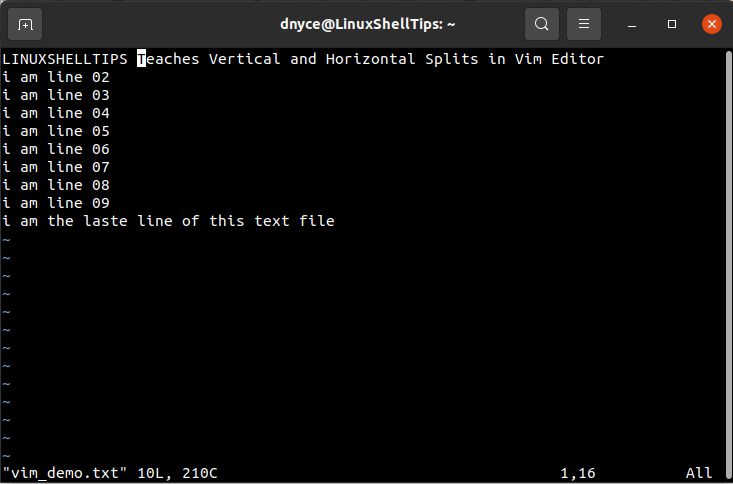
With this file open, our aim is to have better productivity by splitting the current Vim workspace into multiple vertical or horizontal windows. The first step is to ensure that your Vim workspace is in command mode by pressing the [Esc] keyboard key.
Splitting Vim Workspace Vertically
To split the above workspace vertically, execute the vim command:
:vsplit
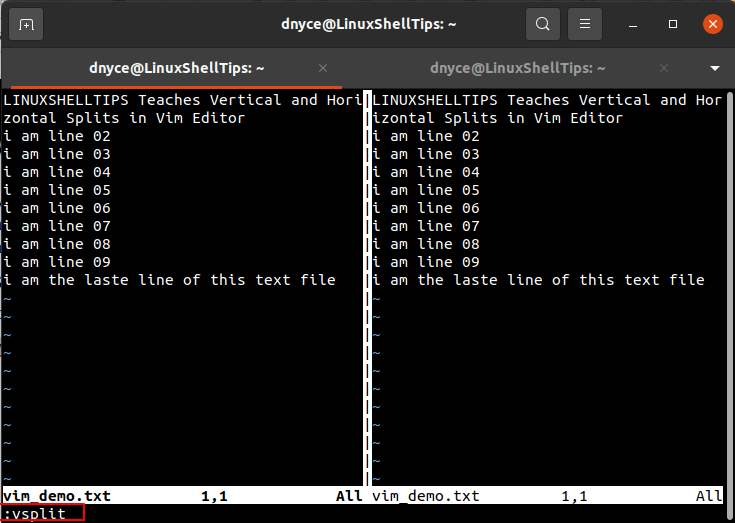
To create a more vertical workspace, re-execute the above command.
The files you open on Vim’s vertical workspace do not have to be identical. To have a different file open on the vertical workspace, implement the command:
:vsplit path/to/file
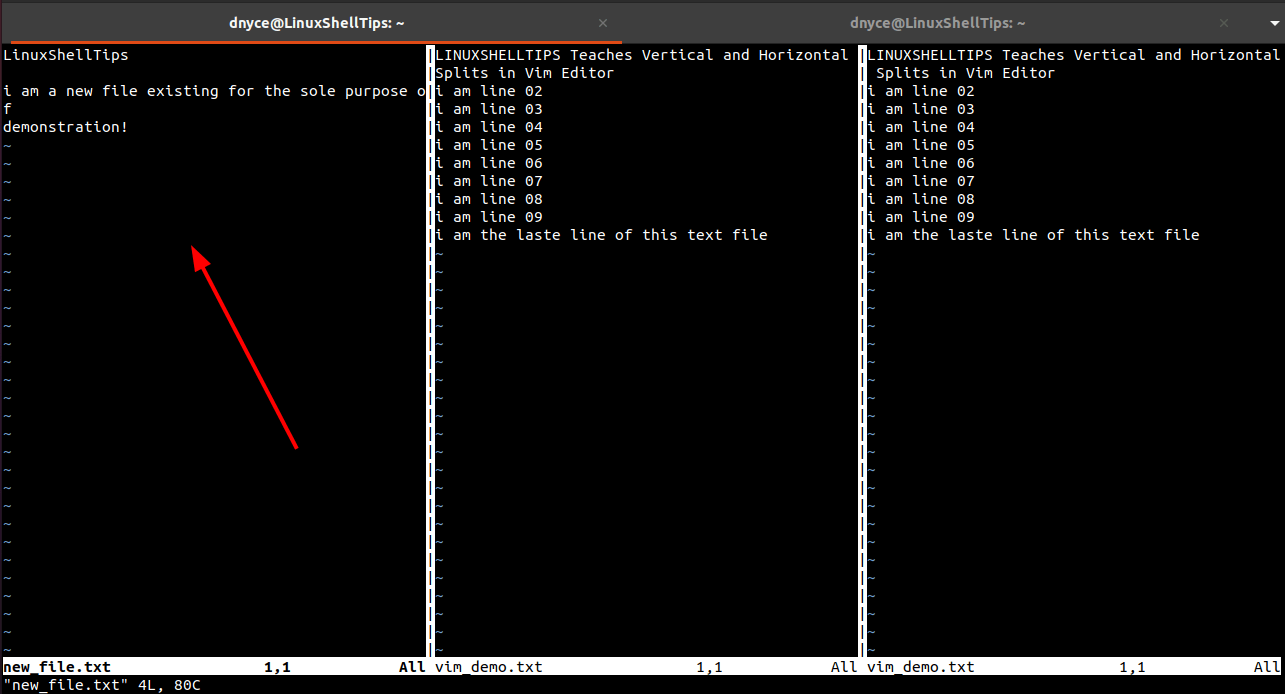
Splitting Vim Workspace Horizontally
To split the Vim workspace horizontally, we would implement the following command:
:split
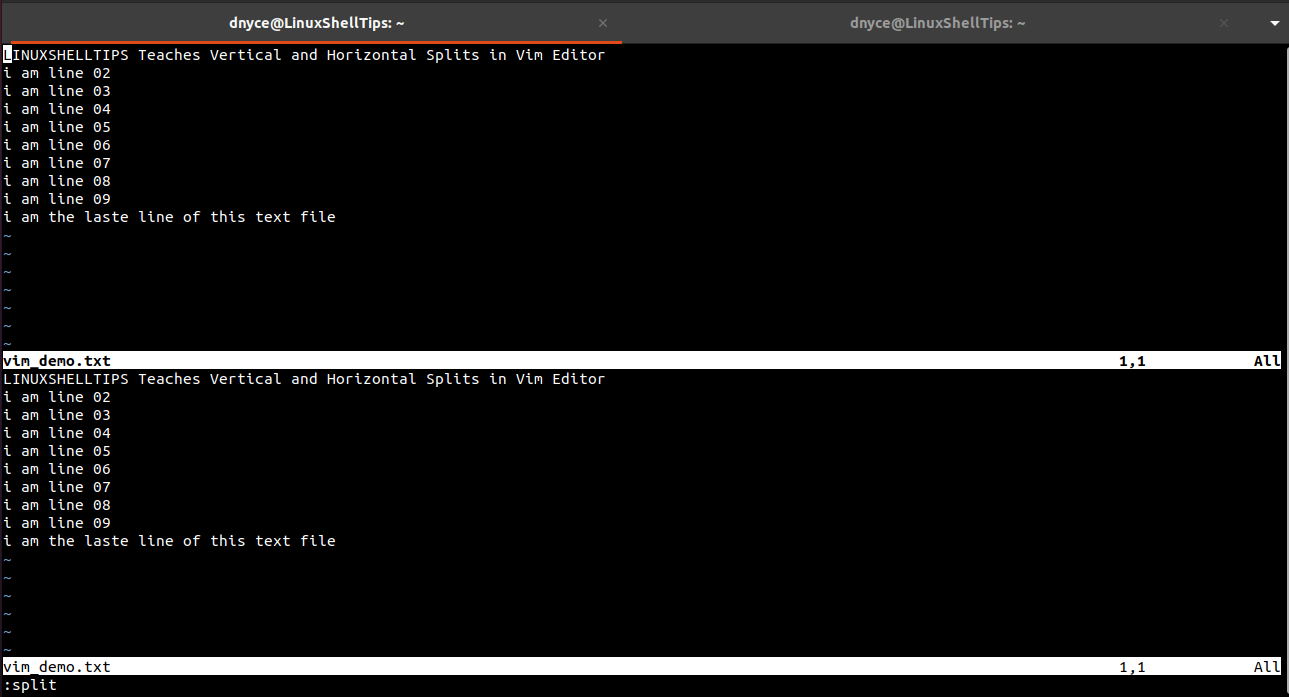
To split different files horizontally, implement the command.
:split /path/to/file
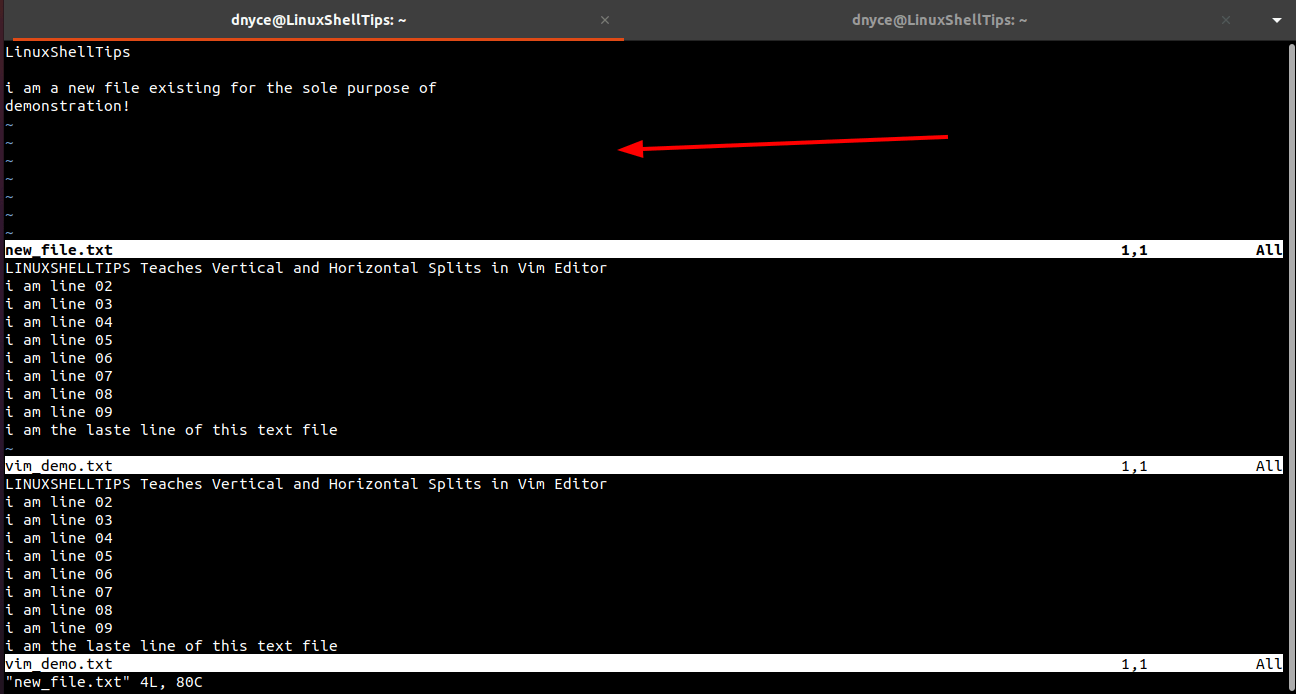
You can even combine the vertical splitting and horizontal splitting vim commands and work with both vertical and horizontal Vim workspace.
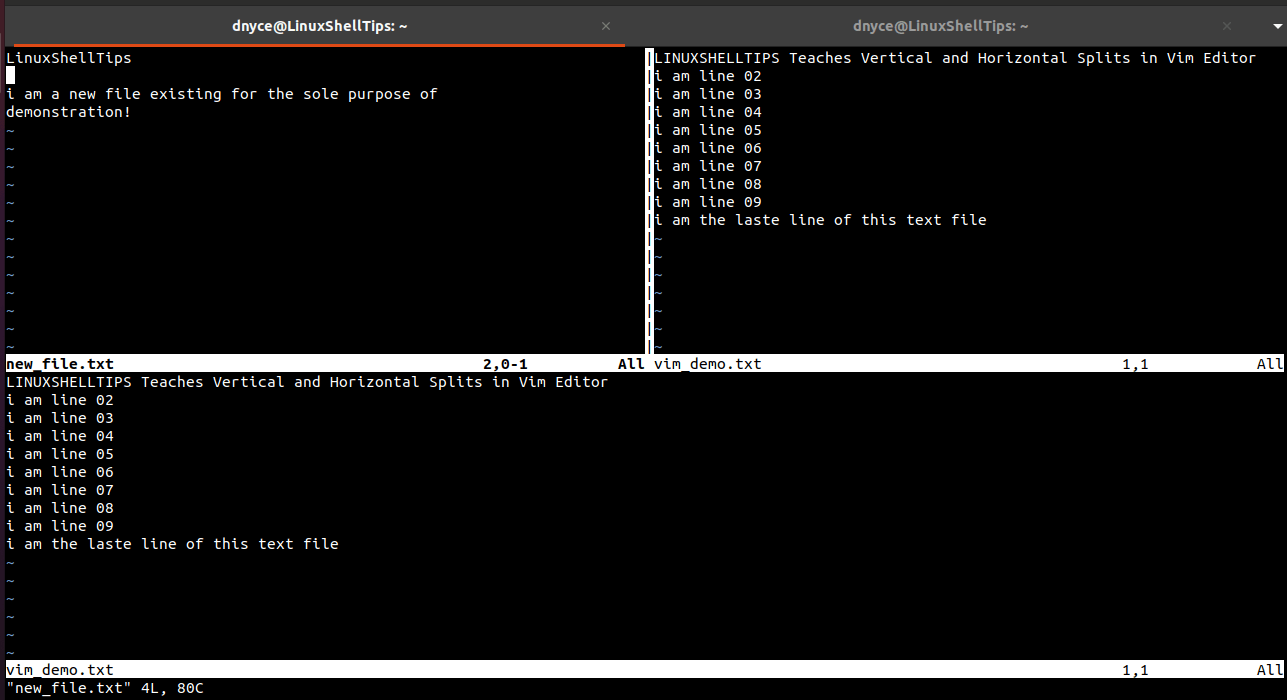
Managing Vertical/Horizontal Vim Workspace Windows
The current window (the one with a blinking cursor) can be closed with the vim command :q .
On vertically split Vim workspace:
- To navigate to the left window use
[Ctrl]+[w]+[h]keyboard keys combination. - To navigate the right window use
[Ctrl]+[w]+[i]keyboard keys combination.
On horizontally split Vim workspace:
- To navigate to the bottom window use
[Ctrl]+[w]+jkeyboard keys combination. - To navigate to the top window use
[Ctrl]+[w]+kkeyboard keys combination. - The keyboard keys combination
[Ctrl]+[w]and pressing[+]key increase the current window’s height. - The keyboard keys combination
[Ctrl]+[w]and pressing[-]key reduce the current window’s height. - The keyboard keys combination
[Ctrl]+[w]and pressing[>]key increase the current window’s width. - The keyboard keys combination
[Ctrl]+[w]and pressing[<]key reduce the current window’s width. - The keyboard keys combination
[Ctrl]+[w]and pressing[=]key reset all split windows’ sizes to be equal.
We can now comfortably work with vertical and horizontal workspace in Vim. Your comments and feedback are always appreciated.
